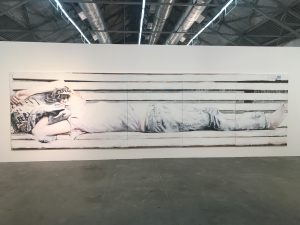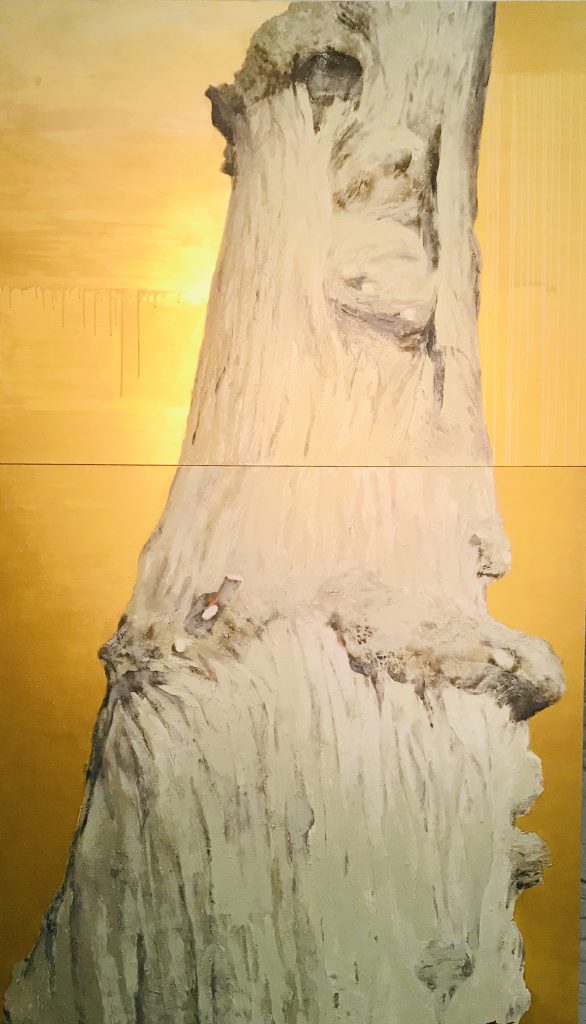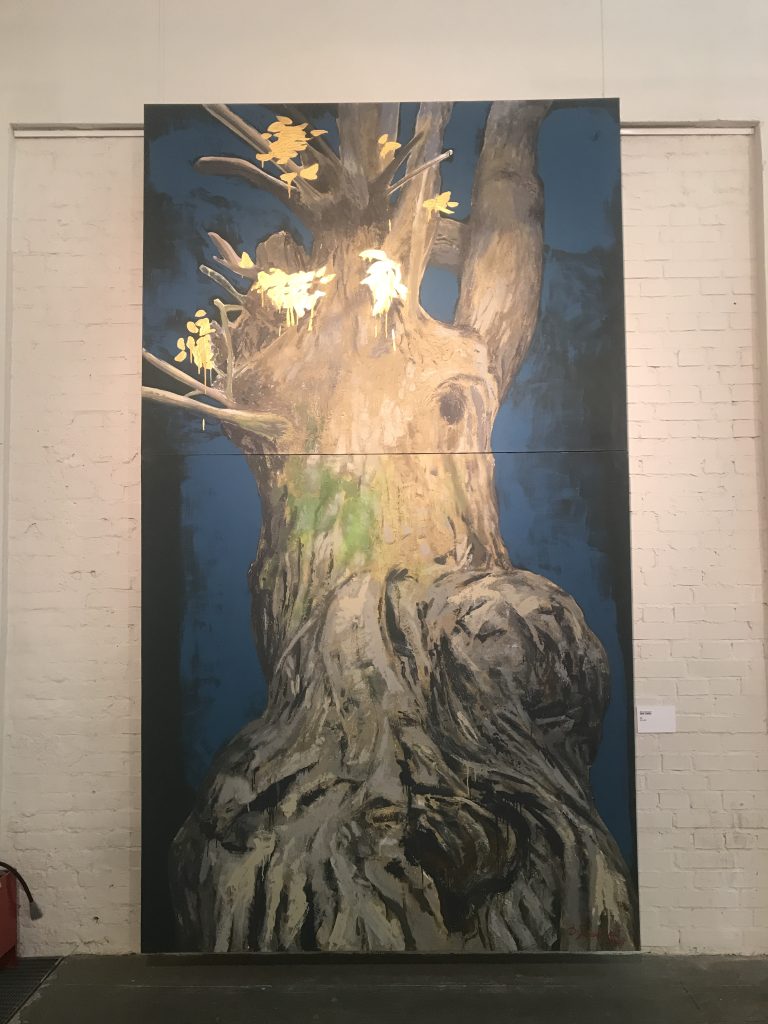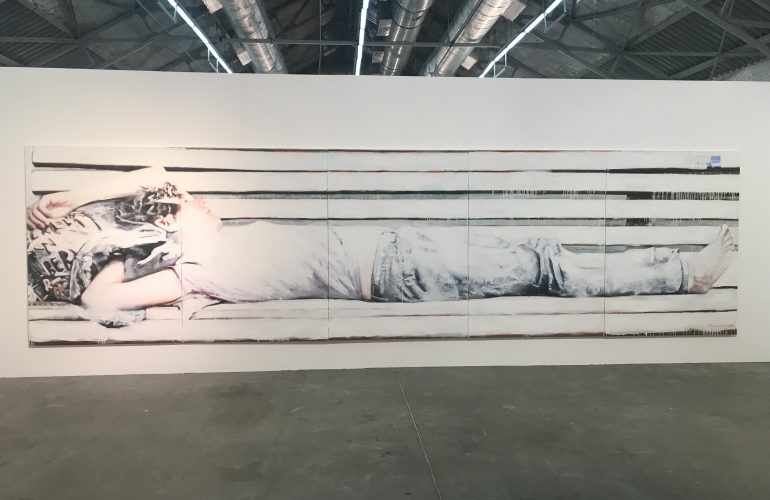Artdecision’s Irina Vernichenko talks with Vladimir Dubossarsky about his recent exhibition at Winzavod Contemporary Arts Center, MSK.
Vladimir Dubossarsky: This exhibition is ironical and it refers to classical painting. Three projects ( “Girl in the Sunlight”, “Tree Trunks” and “Golden Palette”) are interconnected, they are about the clichés that an artist deals with, or rather, an art critic or a spectator deals with. They treat artist as a « sacral » figure, and I do not think he should be. I won’t say I have vulgarized the artist figure, but I belittled it and equated it to the trunks of trees, to lifeless forms.
Irina Vernichenko: You said you started working on “Girl in the Sunlight” project (three portraits of a sleeping homeless woman) in Berlin when you realized you were late for your flight. What is the relationship between mistakes and art?

V D: Art is often born from the concurrence of circumstances. Great things were accidental, by Pollock splashing paints on canvas or Malevich making his square first as a theatrical scenery for the play “Victory over the Sun”. (Anyway, Malevich would have never revealed the truth). First, an artist sees, notices, and then he thinks it over. Errors, failures, randomness are more important than what the artist thinks. Life is slipping to him something more important to convey, than a message of his own. In fact, I don’t think that the artist has something of his own. Where could it come from? The artist takes what he sees, he finds things and then transforms it all into a clear thought.
I V: The exhibition at Winzavod Arts center was eye- catching, with the 7-meter portraits of a homeless woman, “Tree Trunks” project and a light, free, liberated series of self-portraits. What was there from our time, 2019?
V D:In fact I can’t talk about our time, time speaks for itself, it describes itself. Everyone has its own understanding of time, and it is good, it depends on where he lives, how he lives, how old he is. Take the 1930s. What happens: classics, Matisse, etc. continue their line of 1910-20s, Bonnard lived in 1930s, Ilya Repin died in 1930, he worked until the last day. Later in the 1930s the “Totalitarian Art” emerged, at the same time the Surrealists, Dadaists were working. They all described time, it is multidimensional. Sometimes art changes every 10 years, generations see art differently. Time in some ways always escapes, we can not state that « this artist showed the time”, it is shown by different artists and in different pictures. Now time is more compressed, everything happens quicker, technologies change, new opportunities appear, e. g. “science art”, AI is on the doorsteps, it is becoming part of the art network.
It’s awkward to talk about time. You have technical progress that modifies art on the one hand, while having cyclicality in the human consciousness on the other hand, repetitions of what has been done: remakes, remixes, new Abstraction, new Surrealism, which is essentially all old.
I V:And can an artist be a curator for spectators?
VD: Yes, he can be, but the viewers need to think all on their own. The situation allows people to be freer, critics become curators, the gallerists are curators of their gallery, there’s a trend for 20-25 years, that an artist is also a curator, and this universal mix is a fashion and it should be.
IV: What does the notion “mix” mean to you?
V D: Modern culture is structured in such a way that the concept of the artist\curator and where they diverge is blurred. An artist has his style, his view, and he may be invited as a theatre director. This interchangeability, mix of different spheres brings to life a new product such as a theatre director curating an art exhibition. It refreshes the routine of the art system.
Modern artists do not do a painting, they curate a project. An artist comes up with a movie idea, a sculpture, he is the conceptual center, and this move, this changeability is a very important recent achievement in the culture. The system requises renewal and “temperature” increase.
I V: Gold color in Byzantine painting may symbolize trusted heart. What does gold color mean to you?
V D:I take gold as a ready-made cliché, simply as a kind of discourse. I understand the reasoning behind about gold, and about infinity. Gold is an infinite color, and I remember that, but how it appears on the canvas can be different.




Comments